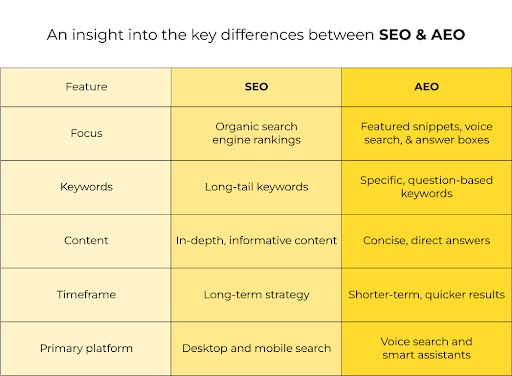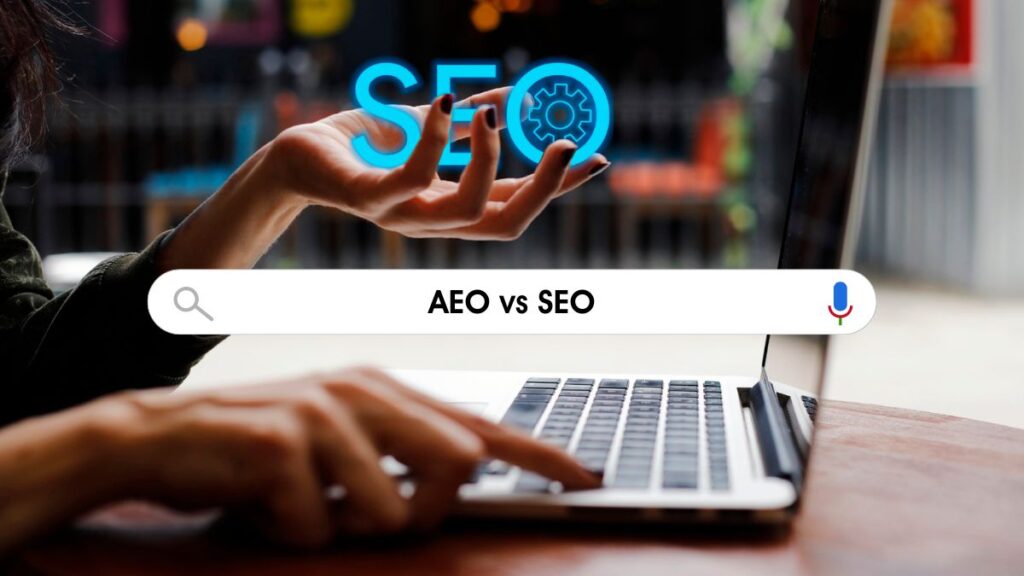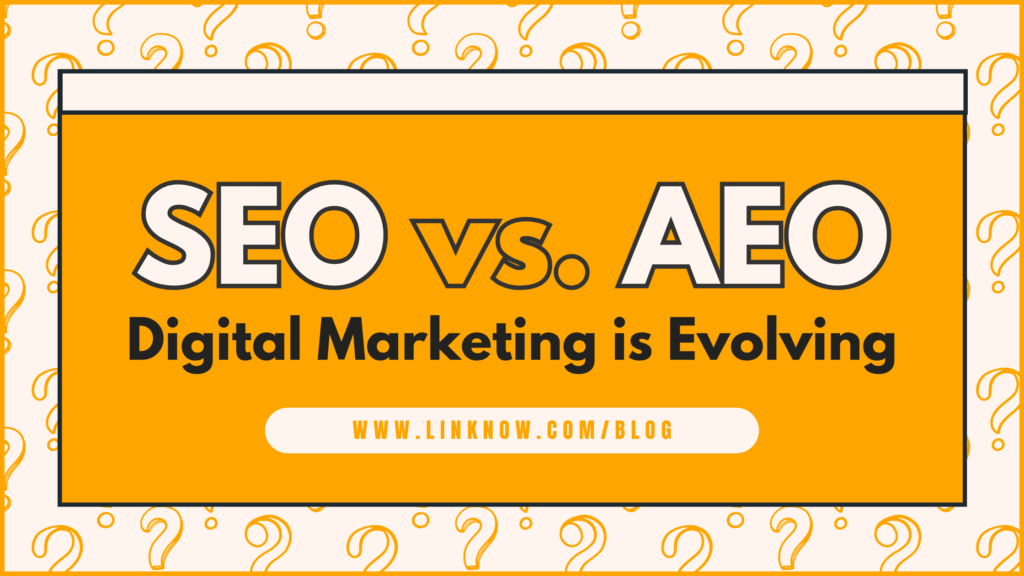Hello, future digital masters! Noah Evans here, from AskByteWise.com, ready to cut through the noise and make complex tech simple. If you’ve been dipping your toes into the vast ocean of online visibility, you’ve likely heard of SEO (Search Engine Optimization). But lately, there’s a new buzzword making waves: AEO (Answer Engine Optimization). It’s natural to wonder, “What’s the difference, and do I really need to worry about both?” This article is your definitive guide, breaking down AEO vs. SEO: What’s the Difference and Do You Need Both? We’ll explore what each means, how they differ, and why understanding both is crucial for anyone aiming to thrive in today’s evolving digital landscape, from small business owners to aspiring content creators.
What is SEO? A Quick Refresher for Online Visibility
Let’s start with the familiar. Search Engine Optimization (SEO) is the practice of increasing the quantity and quality of traffic to your website through organic search engine results. Think of it as making your website the easiest book to find in a massive, ever-growing library – Google, Bing, etc. You want your “book” (your website) to be clearly categorized, well-written, and recommended by others, so when someone asks for information on your topic, yours is at the top of the librarian’s list.
The core goal of SEO is to get your web pages to rank high on Search Engine Results Pages (SERPs) for specific keywords. When people search, they see a list of results, and the higher you are, the more likely they are to click through to your site. It’s all about driving traffic to your digital doorstep.
The Three Pillars of Traditional SEO
SEO isn’t a single trick; it’s a comprehensive strategy built on several key components:
Technical SEO
This is the “nuts and bolts” of your website, ensuring search engines can easily crawl, understand, and index your content. It includes things like:
- Site Speed: How fast your pages load. (Nobody likes a slow website!)
- Mobile-Friendliness: Ensuring your site looks and works great on phones and tablets.
- Site Architecture: How your pages are structured and linked internally.
- Schema Markup (Structured Data): Code that helps search engines understand the context of your content (e.g., “this is a recipe,” “this is a product”).
On-Page SEO
This focuses on optimizing the content on your web pages and the HTML source code. It’s about telling search engines exactly what your page is about.
- Keyword Optimization: Strategically placing relevant keywords in your titles, headings, and body text.
- Content Quality: Creating valuable, in-depth, and well-written content that truly helps your audience.
- Meta Titles and Descriptions: The snippets of text that appear in search results, enticing users to click.
- Image Optimization: Using descriptive file names and alt text for images.
Off-Page SEO
This refers to activities done outside your website to improve its ranking. It’s largely about building your website’s authority and trustworthiness.
- Backlinks: When other reputable websites link to yours. Think of these as votes of confidence. The more high-quality votes you have, the more authoritative your site appears.
- Social Media Signals: While not a direct ranking factor, a strong social presence can drive traffic and brand mentions, indirectly boosting SEO.
- Brand Mentions: When your brand is discussed online, even without a direct link.
The ultimate aim of traditional SEO is to drive organic traffic, meaning visitors who find your site naturally through search engines, without you paying for ads. It’s about establishing a strong, visible presence in the vast digital landscape.
What is AEO? The Rise of Answer Engines
Now, let’s turn our attention to the newer kid on the block: Answer Engine Optimization (AEO). While SEO focuses on getting clicks to your website, AEO is about getting your content directly used by an “answer engine” to provide a concise, immediate answer to a user’s query, often without the user needing to click through to your site.
Imagine you ask a highly knowledgeable personal assistant a question. Instead of giving you a list of books to read, they just tell you the answer directly and clearly. That’s the essence of AEO. It’s optimizing your content to be the definitive, trustworthy source for direct answers, especially in the era of AI-powered search results, voice assistants (like Siri, Alexa, Google Assistant), and rich snippets (like featured snippets and knowledge panels).
The shift towards AEO is driven by the evolution of search itself. Users increasingly expect immediate answers, not just lists of links. Generative AI models are now synthesizing information from various sources to provide these direct answers, and voice search often provides only one best answer. AEO is about ensuring your content is the one chosen to provide that answer.
Key Characteristics of the AEO Landscape
AEO isn’t just a tweak; it’s a different mindset for content creation and optimization.
Direct Answers, Not Just Clicks
The primary goal isn’t necessarily to get a user to click through to your site (though that’s a welcome bonus), but to have your content provide the direct answer within the search interface itself. This could be in a featured snippet, a Google Knowledge Panel, or an AI-generated summary.
Semantic Understanding and User Intent
Answer engines excel at understanding the intent behind a query, not just matching keywords. If someone asks, “How do I fix a leaky faucet?”, they don’t want a page about the history of plumbing; they want step-by-step instructions. AEO demands content that is laser-focused on solving that specific problem.
Conciseness and Clarity are King
Because answer engines aim for quick, digestible responses, your content needs to be incredibly clear, concise, and easy to understand. Bullet points, numbered lists, and direct answers to specific questions perform exceptionally well.
E-E-A-T is Paramount
Experience, Expertise, Authoritativeness, and Trustworthiness (E-E-A-T) becomes even more critical for AEO. If an AI system is going to summarize your content and present it as fact, it needs to be absolutely certain of your credibility. Content from established experts, academic sources, or well-regarded brands has a significant advantage.
Conversational and Voice Search Optimized
Voice search queries are typically longer, more natural, and question-based (“Hey Google, what’s the capital of France?”). AEO involves anticipating these conversational queries and providing straightforward answers.
AEO positions your content to be the trusted source that generative AI models and answer engines will use to directly inform users, building your authority and brand recognition even without a click.
AEO vs. SEO: A Side-by-Side Comparison
To truly grasp the distinction, let’s lay out the key differences between AEO and traditional SEO side-by-side. While they share common ground (like high-quality content), their primary objectives and strategies diverge.
| Feature | Search Engine Optimization (SEO) | Answer Engine Optimization (AEO) |
|---|---|---|
| Core Focus | Driving traffic (clicks) to your website | Providing direct answers within the search interface |
| Target Output | Higher rankings in traditional SERP listings | Inclusion in featured snippets, knowledge panels, AI summaries, voice answers |
| Content Strategy | Broad keyword targeting; comprehensive articles to attract clicks | Specific question-answering; concise, factual, and direct answers |
| Keyword Research | Volume, competition, long-tail keywords for clicks | Question-based queries, implicit questions, conversational language |
| Metrics & Success | Organic traffic, keyword rankings, click-through rate (CTR) | Answer inclusion rate, answer accuracy, authority/trustworthiness |
| Primary Goal | Attract visitors to your website | Be the source of truth; provide immediate value without a click |
| Evolution | Established practice, evolving with algorithm updates | Newer, emerging field driven by AI and conversational search |
| User Experience | Leads users to a page to find information | Delivers information directly to the user |
| E-E-A-T Emphasis | Important for ranking and trust | Absolutely critical for answer inclusion and validation |
Do You Need Both AEO and SEO? The Million-Dollar Question
Given these differences, the obvious question for any content creator, business owner, or marketer is: Do I need to do both AEO and SEO?
The unequivocal answer is a resounding YES, absolutely!
Think of it this way: SEO is like building a magnificent house (your website) on a prime piece of land, making sure it’s structurally sound, has great curb appeal, and is easy to find on the map. You want people to come visit your house.
AEO, on the other hand, is like furnishing that house with the most comfortable chairs, stocking the fridge with delicious food, and ensuring there’s a knowledgeable host ready to directly answer any visitor’s questions the moment they walk in. It’s about enhancing the experience and providing immediate value.
These aren’t competing strategies; they are complementary, working hand-in-hand to ensure your online presence is both visible and incredibly helpful.
- SEO lays the foundation: Without strong SEO, your content might not even be discovered by the answer engines. High rankings signal to AI systems that your content is relevant and authoritative. A well-optimized website with good technical health, relevant keywords, and quality backlinks provides the rich, crawlable data that answer engines need to draw from.
- AEO refines the value: Once your content is discoverable, AEO ensures it’s packaged in a way that answer engines can easily process and present directly to users. It’s about making your content the most efficient and trustworthy source for direct answers, solidifying your position as an expert.
By focusing on both, you maximize your visibility across the entire spectrum of how people search – whether they’re looking for a list of resources to explore, or a quick, definitive answer to a specific question. You serve both the “clickers” and the “answer-seekers.”
Ignoring one in favor of the other would be a mistake. Neglecting SEO means your content might not get seen; ignoring AEO means you’re missing out on a rapidly growing segment of search interactions where users don’t even click.
How to Weave AEO and SEO Together for Maximum Impact
So, how do you practically combine these two powerful strategies? Here’s a roadmap to integrate AEO thinking into your existing SEO efforts:
1. Master User Intent: Understand Why People Search
This is the bedrock for both. Don’t just target keywords; understand the question behind the keyword. What problem is the user trying to solve? What information are they truly seeking? When optimizing for “best running shoes,” are they looking for a list of products, a comparison guide, or specific recommendations for flat feet? AEO pushes you to answer the precise underlying question.
2. Craft Clear, Concise, and Comprehensive Content: Be the Authority
For AEO, your content needs to provide direct, unambiguous answers. Use clear headings (H2s, H3s), bullet points, and numbered lists to make information scannable and digestible. For SEO, ensure this content is also comprehensive and in-depth, providing all the necessary context and supporting information a user might need if they click through. Strike a balance between conciseness for answers and comprehensiveness for a holistic user experience.
3. Embrace Structured Data (Schema Markup): Speak the Language of Machines
This is a huge win for AEO. Structured data helps search engines and AI systems understand the context and meaning of your content. For example, marking up FAQs on your page tells Google that these are specific questions with direct answers, making them prime candidates for featured snippets or direct answer boxes. It’s like giving your content a label that says, “Hey, this is the answer to X question!”
4. Optimize for Conversational Search: Think How People Talk
Consider how someone would ask a question aloud to a voice assistant. Use natural language in your headings and content. Instead of just “Running Shoes,” consider a heading like “What Are the Best Running Shoes for Beginners?” or “How to Choose the Right Running Shoes for Your Foot Type.” This directly addresses conversational queries.
5. Build E-E-A-T Relentlessly: Be Trustworthy
For both SEO and AEO, E-E-A-T is paramount, but for AEO, it’s amplified. If an AI system is going to quote or summarize your content, it needs to trust your authority implicitly.
- Experience: Share personal insights, case studies, and real-world results.
- Expertise: Demonstrate deep knowledge of your subject matter.
- Authoritativeness: Get endorsements (backlinks) from other reputable sites, be cited by others.
- Trustworthiness: Ensure your information is accurate, up-to-date, and backed by credible sources. Clearly state who authored the content and their credentials.
6. Don’t Neglect Traditional SEO Fundamentals
Keep your website technically sound, fast, and mobile-friendly. Continue to build high-quality backlinks, optimize your meta descriptions, and ensure your site structure is logical. These foundational SEO elements ensure that your content is even visible for answer engines to parse. Without a strong SEO base, your AEO efforts might fall flat.
For an even deeper dive into the specifics of implementing AEO, be sure to check out our comprehensive guide on Answer Engine Optimization (AEO). It details advanced strategies and tools to get your content ready for the AI era.
Summary & Key Takeaways
The digital world is always evolving, and the distinction between AEO and SEO is a prime example of this.
- SEO focuses on getting your website to rank high in traditional search results, driving clicks and traffic to your site. It’s about visibility in a list.
- AEO focuses on getting your content to provide direct answers within search interfaces, AI summaries, and voice responses, often without requiring a click. It’s about being the definitive source of truth.
- You absolutely need both. They are not opposing forces but complementary strategies. SEO builds the foundation of discoverability and authority, while AEO ensures your valuable content is directly leveraged by the new generation of answer-focused search.
- Integrating them means focusing on user intent, creating incredibly clear and trustworthy content, embracing structured data, and optimizing for conversational queries, all while maintaining strong SEO fundamentals.
By understanding and strategically implementing both AEO and SEO, you position your content not just to be found, but to be the answer, cementing your authority and relevance in the ever-changing digital landscape.
Frequently Asked Questions (FAQ)
Is SEO dead with the rise of AEO?
No, absolutely not! SEO is still fundamental. AEO builds upon SEO. If your content isn’t discoverable and authoritative through traditional SEO practices, it’s unlikely to be chosen by an answer engine. SEO ensures your content is visible; AEO ensures it’s the best possible answer.
What’s an “answer engine”?
An “answer engine” refers to any system or search interface designed to provide users with direct, concise answers to their questions, rather than just a list of links. This includes AI-powered search results (like Google’s SGE or Bing’s AI chat), voice assistants, and rich snippets like featured snippets or knowledge panels.
How quickly can I see results from AEO?
Like traditional SEO, AEO isn’t an overnight fix. Building the necessary E-E-A-T, creating high-quality, answer-focused content, and getting it indexed can take time. You might see some quicker wins with well-structured FAQ sections appearing in featured snippets, but comprehensive AEO impact is a long-term strategy.
Does AEO only apply to voice search?
While voice search is a significant driver for AEO (due to its conversational, question-based nature), AEO applies to all forms of answer-focused search. This includes text-based queries that trigger featured snippets, knowledge panels, and the new generative AI search experiences that summarize information to provide direct answers.
Is structured data essential for AEO?
While not strictly “essential” for all AEO, structured data (schema markup) is highly recommended and incredibly beneficial. It provides explicit signals to search engines about the type and context of your content, making it much easier for them to understand and extract direct answers. It’s like giving your content a clear label for AI systems.
See more: AEO vs. SEO: What’s the Difference and Do You Need Both?.
Discover: AskByteWise.


